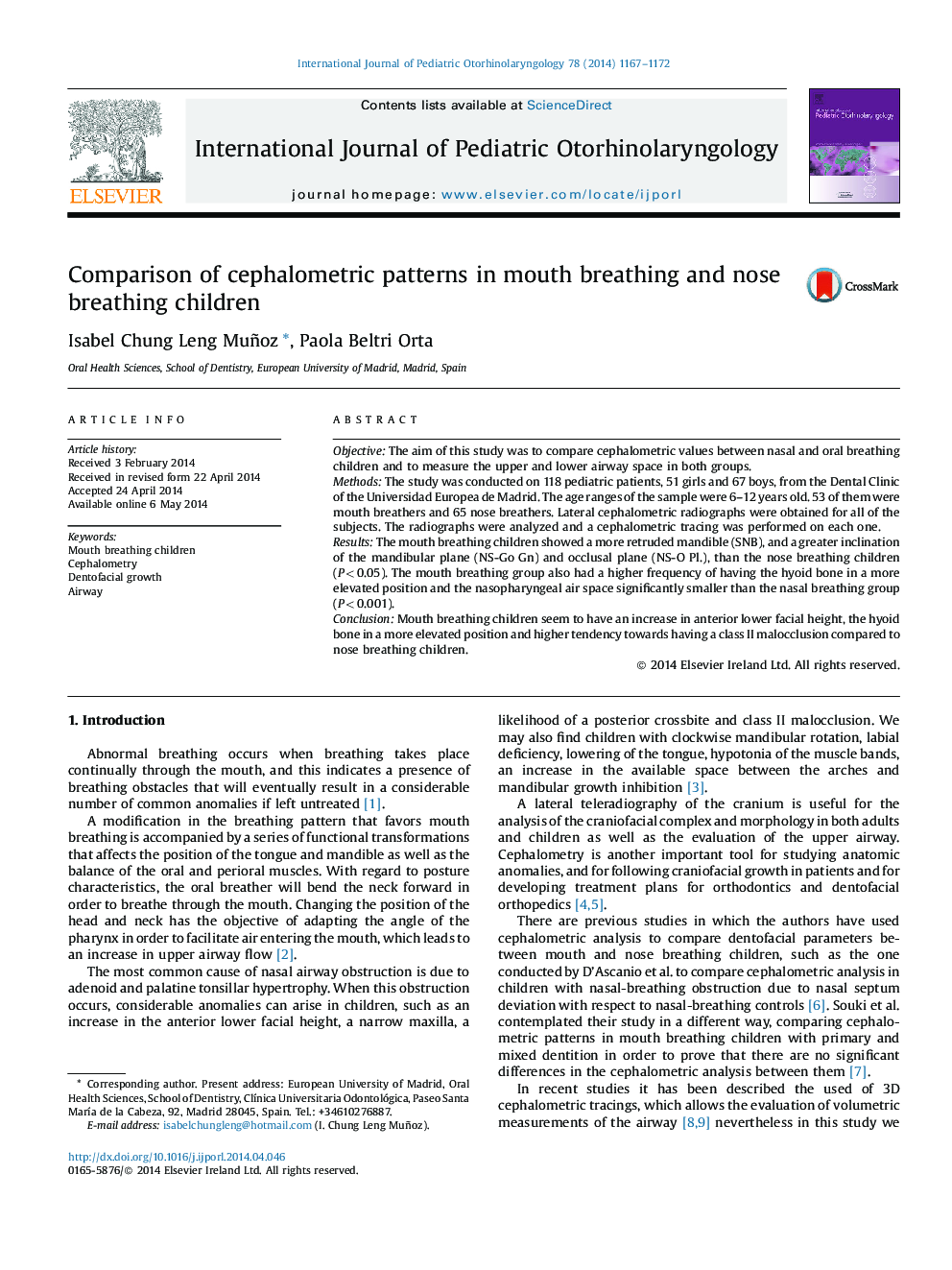| Article ID | Journal | Published Year | Pages | File Type |
|---|---|---|---|---|
| 4112585 | International Journal of Pediatric Otorhinolaryngology | 2014 | 6 Pages |
ObjectiveThe aim of this study was to compare cephalometric values between nasal and oral breathing children and to measure the upper and lower airway space in both groups.MethodsThe study was conducted on 118 pediatric patients, 51 girls and 67 boys, from the Dental Clinic of the Universidad Europea de Madrid. The age ranges of the sample were 6–12 years old. 53 of them were mouth breathers and 65 nose breathers. Lateral cephalometric radiographs were obtained for all of the subjects. The radiographs were analyzed and a cephalometric tracing was performed on each one.ResultsThe mouth breathing children showed a more retruded mandible (SNB), and a greater inclination of the mandibular plane (NS-Go Gn) and occlusal plane (NS-O Pl.), than the nose breathing children (P < 0.05). The mouth breathing group also had a higher frequency of having the hyoid bone in a more elevated position and the nasopharyngeal air space significantly smaller than the nasal breathing group (P < 0.001).ConclusionMouth breathing children seem to have an increase in anterior lower facial height, the hyoid bone in a more elevated position and higher tendency towards having a class II malocclusion compared to nose breathing children.
